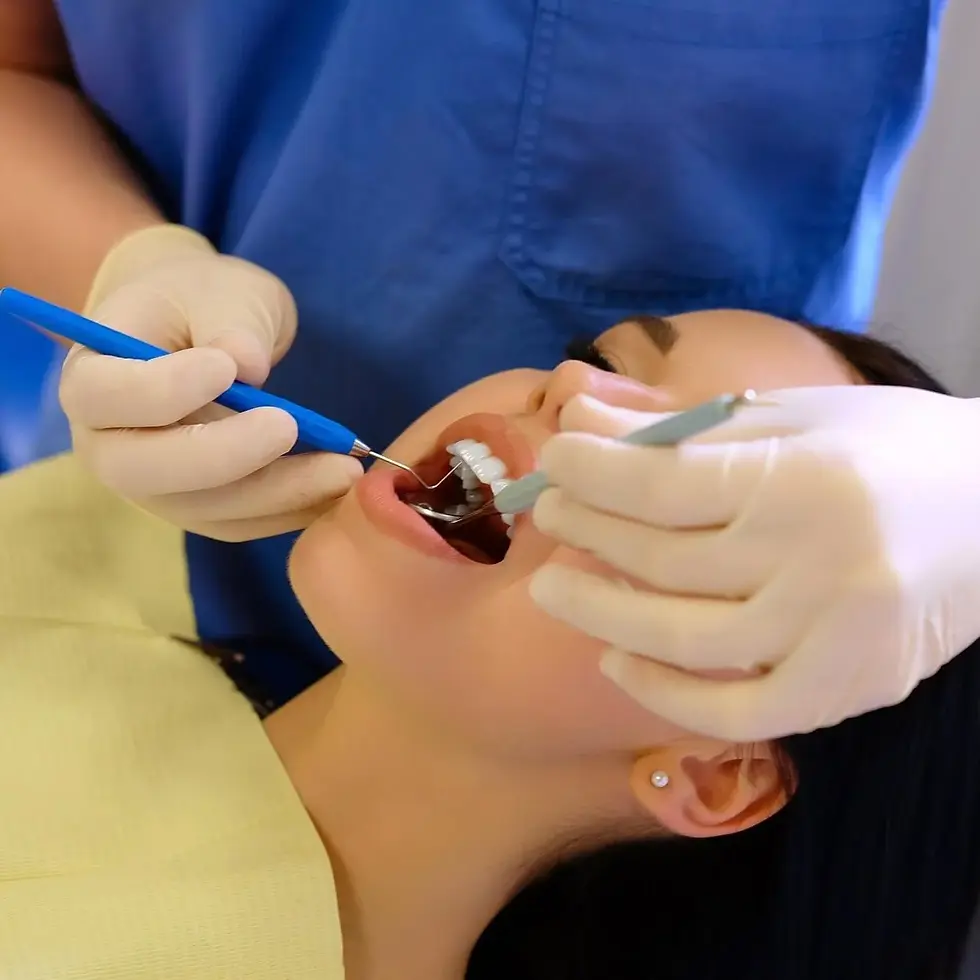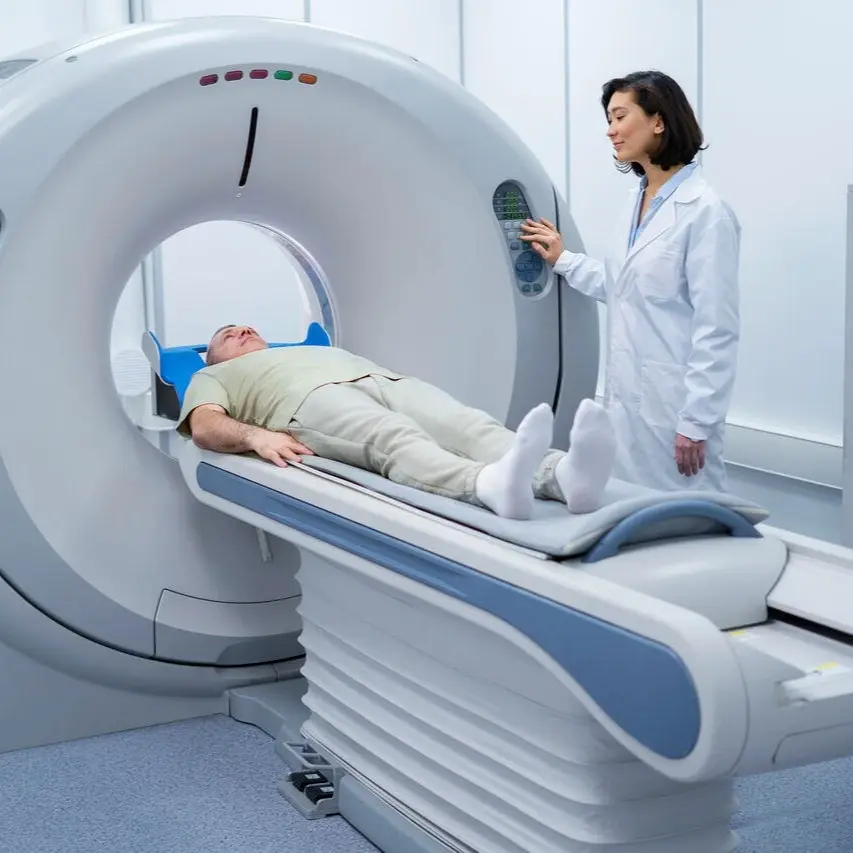
PPD
Description
"Pocket Probing Depth" test evaluates the depth of the spaces between your teeth and gums to assess gum health and detect early signs of periodontal disease. A small dental probe is gently inserted around each tooth to measure how far the gum has pulled away. Deep pockets may indicate inflammation, infection, or bone loss. This test is especially helpful if you’ve noticed bleeding gums or gum tenderness. Results help guide treatment like deep cleaning and support long-term gum health.
Category
Periodontal Function

Pocket Probing Depth
Procedure
Non-Invasive
Sample Type
No biological sample is needed for this test.
Units
Millimeters
Procedure Category
Measure
Test Group
Dental Health Group
Test Group Description
Dental Health Group: Tests within this group examine various aspects of oral health and dental hygiene. These assessments provide insights into factors such as tooth decay, gum disease, and overall oral hygiene.
Key Reasons For Testing
Periodontal Health Assessment: Measures gum pocket depths to evaluate periodontal health and detect disease.
Monitoring Gum Disease Progression: Tracks changes in pocket depth over time, indicating disease progression or improvement.
Treatment Planning: Guides periodontal therapy decisions based on the severity of gum pocket depths.
Evaluation of Treatment Response: Assesses changes in pocket depth to evaluate the effectiveness of periodontal treatment.
Preventive Care: Enables early detection of periodontal disease, supporting preventive strategies to maintain gum health.
Results That Differ From The Norm (Direct and Indirect Causes)
Abnormal results may indicate:
Bruxism (Teeth grinding)
Chemotherapy (Treatment method using drugs to destroy cancer cells throughout the body)
Crohn's disease (Inflammatory bowel disease)
Diabetes (Metabolic disorder affecting blood sugar regulation)
Genetic factors
Gingivitis (Early stage of gum disease characterized by gum inflammati...
Currently, this test is not directly associated with any conditions listed on the Health Status page. However, it may be included as part of a broader set of tests linked to specific health conditions.
Health Status Conditions It May Be Used To Assess
Some Prominent Medical Labs That May Offer This Test
Please note that this particular test has not been associated with any of the listed prominent medical labs. We recommend enquiring with your private physician or nearest hospital to determine where this specific test can be performed.
References
Important Note
Any medical procedure yielding results outside the norm may be directly or indirectly linked to the conditions outlined on this page. Various factors, including genetics, medication and supplement usage, recent illnesses, pregnancy, pre-test eating, smoking, and stress, can impact the test's outcome. Additionally, factors like false positives, false negatives, inaccurate analyses, and others can influence results.
Reference ranges, which help healthcare professionals interpret medical tests, may vary depending on age, gender, and other factors. They may also differ between laboratories due to variations in instruments and methods used. Optimal ranges are designed for preventive purposes, aiming to identify trends and potential risks early, while normal ranges reflect conventional laboratory values indicating no current disease or pathology. Your healthcare practitioner may have specific reasons for testing that deviate from the usual or may interpret results differently based on individual circumstances. Proper interpretation typically involves considering clinical findings and other diagnostic tests. Hence, it is crucial to provide your healthcare professionals with a comprehensive medical history, consult with them for result interpretation, and follow their guidance for potential re-testing or additional diagnostics.
Disclaimer
This content is provided solely for informative and educational purposes. It is not intended as a substitute for medical advice or treatment from a personal physician. Regarding the interpretation of their medical test results and/or specific health questions, it is recommended that all readers and viewers consult their physicians or other qualified health professionals. The publisher is not responsible for any adverse health effects that may result from reading or following the information in this educational content. Before beginning any nutrition, supplement, or lifestyle program, all viewers, especially those taking prescription or over-the-counter medications, should consult their physician or health care practitioner.
Please note that while prominent lab names are included in this content, we cannot guarantee that these labs offer all the tests mentioned. For confirmation, individuals should contact the labs directly or consult their medical practitioners. The information provided reflects general knowledge at the time of publication and may not include recent updates or emerging research. Readers should verify details with qualified professionals to ensure the most up-to-date and accurate guidance.
[1] Hefti AF. Periodontal probing depth measurement: a review. J Clin Periodontol. 1997;24(7):505-511.
[2] Armitage GC. Development of a classification system for periodontal diseases and conditions. Ann Periodontol. 1999;4(1):1-6.
[3] van der Velden U. Probing force and the relationship of the probe tip to the periodontal tissues. J Clin Periodontol. 1979;6(2):106-114.
[4] Goodson JM, Tanner AC, Haffajee AD, et al. Patterns of progression and regression of advanced destructive periodontal disease. J Clin Periodontol. 1982;9(6):472-481.
[5] Listgarten MA. Periodontal probing: what does it mean? J Clin Periodontol. 1980;7(3):165-176.
[6] Pihlstrom BL, Ortiz-Campos C, McHugh RB. A randomized four-year study of periodontal therapy. J Periodontol. 1981;52(5):227-242.
[7] van der Velden U, de Vries JH. Introduction of a new periodontal probe: the pressure probe. J Clin Periodontol. 1978;5(3):188-197.
[8] Badersten A, Nilvéus R, Egelberg J. Effect of nonsurgical periodontal therapy. I. Moderately advanced periodontitis. J Clin Periodontol. 1981;8(1):57-72.
[9] Greenstein G. The role of bleeding upon probing in the diagnosis of periodontal disease. J Periodontol. 1984;55(12):684-688.
[10] Lang NP, Joss A, Orsanic T, Gusberti FA, Siegrist BE. Bleeding on probing. A predictor for the progression of periodontal disease? J Clin Periodontol. 1986;13(6):590-596.
[11] Cobb CM. Clinical significance of non-surgical periodontal therapy: an evidence-based perspective of scaling and root planing. J Clin Periodontol. 2002;29(Suppl 2):6-16.







